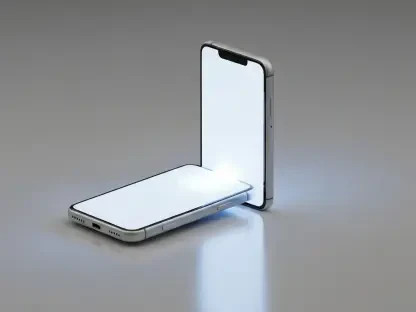Augmented reality (AR) smart glasses are becoming increasingly popular, offering a blend of technological innovation and convenience. The Even Realities G1 is one of the latest entries in this burgeoning market, presenting a unique set of features and design choices. As AR glasses continue to advance, the Even Realities G1 aims to set itself apart with its sleek design and practical functionalities, while also highlighting the ongoing challenges in the realm of smart eyewear.
Introduction to Even Realities G1
The Even Realities G1 smart glasses are designed to provide an augmented view of the world. Their lightweight and unobtrusive design sets them apart from many other AR devices. These AR glasses aim to mimic the appearance of regular prescription glasses, coming in various lens shapes and colors, which appeal to a broad audience. The intention behind the G1’s design is to provide a user-friendly interface that seamlessly integrates with everyday life, making them suitable for both tech enthusiasts and casual users.
The G1’s design philosophy emphasizes simplicity and functionality. By avoiding overtly technical elements commonly seen in other AR glasses, the G1 successfully blends advanced technology with a familiar aesthetic. This blend of form and function aims to make augmented reality more accessible and less intimidating for potential users. However, the question remains whether the technological capabilities of the G1 can truly deliver a seamless and practical AR experience.
Design and Construction
The frame of the G1 is made from a magnesium alloy, contributing to its lightweight and robust nature. A sandstone coating adds smoothness and a cooling effect to the touch. The emphasis on high-quality materials not only ensures durability but also enhances the overall user experience. The G1’s construction choices reflect an understanding of the importance of comfort and aesthetics in wearable technology, positioning the glasses as not just functional but also stylish accessories.
The temples of the G1 are made of titanium with silicone on the inner surfaces, enhancing comfort for prolonged wear. These glasses maintain a minimalist aesthetic, with no visible cameras or LEDs. This minimalist approach helps the G1 stand out in a market often cluttered with bulky and conspicuous designs. By streamlining the appearance, the G1 aims to appeal to users who prefer discretion and simplicity in their tech gadgets while still providing the necessary features.
Lens and Eye Protection
The G1 features nearly transparent lenses with a 98% light transmission rate, including UV protection and blue light reduction. This ensures minimal visual distortion. The integration of these protective elements highlights the G1’s commitment to user safety and comfort, addressing common concerns about prolonged exposure to digital screens. By incorporating UV protection and blue light reduction, the G1 caters to users who may be wary of the potential harmful effects of extended AR use.
Prescription single-vision lenses are available at an extra cost, and custom UltraFit lenses tailored to facial measurements can be acquired through specific opticians. This customization option enhances the accessibility of the G1 for users with specific vision needs, ensuring that the glasses can serve a wide range of individuals. The attention to personalized fit further underscores the commitment to user comfort and functionality, setting a high standard for AR eyewear.
Waveguide Projection Technology
The G1 uses waveguide projection technology, which is lighter and allows transparency in the lenses, enabling safe navigation of the user’s environment. This technology represents a significant advancement in the field of AR, as it addresses common issues related to weight and bulkiness. The G1’s waveguide system facilitates a more seamless integration of digital information with the real world, allowing users to stay aware of their surroundings without sacrificing the AR experience.
However, this technology results in a lower resolution of 640-by-200 pixels and a monochrome green display. This provides fewer colors and a smaller field of view compared to other systems. The limitations of the waveguide projection highlight the ongoing challenges in developing high-quality AR displays that are both lightweight and high-resolution. Despite these drawbacks, the G1’s approach reflects an effort to prioritize practicality and user safety, which are crucial in everyday use.
Display Characteristics
The monochrome green display gives a retro feel, displaying basic information such as notifications, time, weather, and calendar appointments. Though adequate for indoor use, it struggles in bright outdoor light. This highlights a common challenge in AR technology—balancing display quality with environmental adaptability. The retro aesthetic may appeal to certain users, but the lack of color and resolution might limit the overall user experience, especially in dynamic outdoor settings.
The dashboard has three customizable modes: Minimal, Dual, and Full, expanding the amount of information displayed to suit user preferences. This level of customization allows users to tailor the AR experience to their specific needs, enhancing the practicality of the G1. However, the effectiveness of these modes is contingent on the display’s ability to present information clearly and consistently, which can be a challenge given its limitations in brightness and resolution.
Interaction and Control Mechanisms
Interaction with the G1 is mainly via head tilts, triggering the dashboard view. While adjustable, this can result in the user looking upwards frequently. The reliance on head gestures for interaction underscores the innovative approach of the G1, offering a hands-free way to access information. However, the practicality of this method can be questioned, as it may not be intuitive or convenient for all users, particularly in situations requiring subtlety.
Touch gestures on the temples are available but prove inconsistent. For detailed control, the Even mobile app is needed, which manages processing and display functions effectively. This reliance on an external app for refined control illustrates the limitations of the G1’s built-in interaction mechanisms. While the app provides a more robust interface for managing the glasses’ functions, the necessity of frequently switching between the device and the app may detract from the seamlessness of the AR experience.
Battery Life and Charging
The G1 boasts a remarkable battery life, lasting up to 15 days with regular use. The wireless charging case adds convenience, offering multiple charges with its 2,000mAh battery. This impressive battery performance highlights one of the G1’s key strengths, addressing a common pain point in wearable technology. The convenience of extended battery life ensures that users can rely on the glasses for continuous use without frequent interruptions for recharging.
This charging case is designed innovatively to keep the glasses secure, ensuring they recharge automatically and simplifying the user experience. The thoughtful design of the charging case not only enhances the practicality of the G1 but also reflects an understanding of the importance of ease of use in everyday scenarios. The combination of reliable battery life and convenient charging solutions positions the G1 as a practical choice for users seeking dependable AR eyewear.
Functional Capabilities
The transcription feature writes out spoken words in real-time, which is useful for those hard of hearing but can have some accuracy issues. Teleprompting supports speech delivery by scrolling prepared text. These features highlight the practical uses of the G1 in specific scenarios, demonstrating its potential as an assistive device. The transcription capability, despite its imperfections, showcases the G1’s application in enhancing accessibility, while the teleprompting feature offers valuable support for public speaking and presentations.
These features highlight the practical uses of the G1 in specific scenarios, demonstrating its potential as an assistive device. The G1’s functional capabilities underline the commitment to addressing diverse user needs, from accessibility to professional applications. However, the effectiveness of these features is contingent on their accuracy and reliability, which may vary based on the specific use case and user requirements.
Limitations in Translation and Navigation
Translation and navigation functionalities are less impressive. Translations often lack coherence and speed, making real-time conversation challenging. The translation feature, while innovative, falls short in practical execution, highlighting the ongoing challenges in real-time language processing and the need for further refinement. The inconsistency in translations can impede fluid communication, making it less reliable for users who depend on precise language support in dynamic situations.
The navigation feature offers turn-by-turn directions but suffers from delayed route calculations and inaccurate map orientations, affecting practical use. This limitation in navigation functionality underscores the difficulties in integrating real-time location data with AR displays. The delays and inaccuracies can be particularly challenging in environments where precise navigation is crucial, potentially undermining the usability of the G1 for route guidance and other location-based applications.
Verdict and Analysis
Augmented reality (AR) smart glasses are gaining momentum, seamlessly blending technological innovation with convenience. Among the newest contenders in this rapidly expanding field is the Even Realities G1, which introduces a unique array of features combined with thoughtful design elements. As advancements in AR glasses continue to mount, the Even Realities G1 strives to distinguish itself with its streamlined aesthetic and practical capabilities. Nevertheless, it also underscores the ongoing challenges faced by smart eyewear.
Augmented reality glasses like the Even Realities G1 integrate real-world views with computer-generated enhancements, providing users with enriched experiences. These glasses can be used in various sectors such as education, healthcare, gaming, and professional industries, allowing for greater productivity and interactive experiences. The G1 offers innovative solutions, for instance, by supporting hands-free operation and real-time data display.
Despite these advancements, AR glasses, including the Even Realities G1, navigate a series of challenges. Among these are issues related to battery life, user comfort, and the necessity for continuous software updates to maintain optimal performance. Achieving a balance between cutting-edge technology and everyday usability remains crucial. Moving forward, the focus will likely be on overcoming these obstacles to make AR glasses a staple in everyday life.









